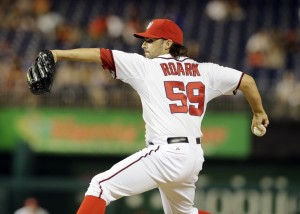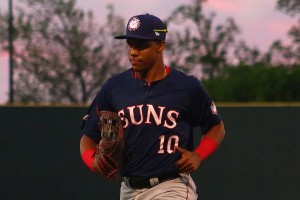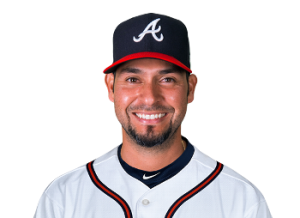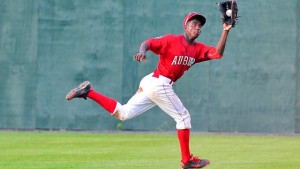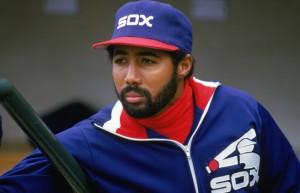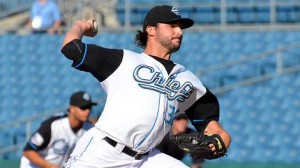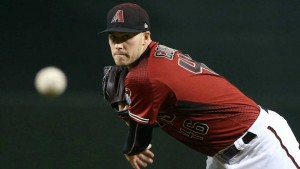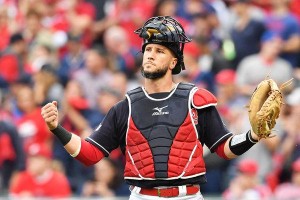MLB.com Nats beat reporter Jamal Collier gives us a holiday gift with a post-Xmas mailbag dated 12/26/18.
Here’s how I would have answered the questions he took.
—
Q: It Harper comes back to the Nats looking for 330/10, do the Nats go over the tax or let him walk?
A: Isn’t it obvious by now? You let him walk. I think this was pretty clear from two observations:
- Mike Rizzo has already spent his $30M AAV, and spent it quickly
- Mark Lerner pretty much said as much in ill-advised remarks to a reporter.
The Luxury Tax strikes yet again; the Lerner family, multi-billionaires, will not spend an additional 10-15M above some imaginary payroll number to keep one of the league’s most marketable players. Player salaries actually FELL for the first time in two decades, as clubs in total spent less than they have since 2004. Maybe one of these big-spending clubs will break the bank and hand Bryce Harper and Scott Boras their goal; the largest contract in the history of the game. But it sounds like its a reach, and it definitely doesn’t seem to be happening in Washington.
Collier refuses to get into hypotheticals, then notes that the Luxury tax for last year was “only” a couple million dollars. Yeah, and only a couple of high-end draft picks, and only the reason why the club fired one of Rizzo’s most trusted advisors for absolutely screwing it up.
—-
Q: Roark trade more about getting a LHP or the analytics told them he was on MAJOR decline year? $10M for innings eater is the going rate
A: I think the team was taking a calculated gamble that Tanner Roark‘s best years are behind him. Despite appearances or opinions, Roark was basically a league average pitcher last year. That’s a significant step ABOVE a replacement level/5th starter type. But, he’s been trending down, he’s heading into his age 32 year, and the team thought it could spend his $10M better. I don’t think lefty versus righty had anything to do with it. Of course, they basically replaced him with an even older Anibal Sanchez, so sorry for sounding hypocritical on his age. But while Roark struggled to even get to his 98 ERA+ figure last year … Sanchez had a late-career ephiphany that led him to being one of the top pitchers in all of baseball for the 2nd half of last year. A better trend line in the end.
Collier agrees, that this was a gamble betting that Roark is set to regress in 2019.
—
Q: If the Nats go out and sign one or two back end of the rotation starters, what does that do to the development of Joe Ross and Erick Fedde? Moved to the bullpen? Sent to Triple A?
A: I’d have a hard time seeing the Nats signing a MLB-contract for another starter at this point, because Joe Ross has nothing to prove in AAA. But Erick Fedde does. Joe Ross has proven he can be an effective MLB starter, with his 125 ERA+ in 19 starts in 2016 as evidence. Now he’ll be 26, with a new elbow, and looking to answer the question whether he’s back from TJ surgery. For me, for a relatively affordable salary (1st year arb estimate of $2.5M), that’s a great gamble to go with on your 5th starter. If he suddenly comes out in 2016 mode, 20-25% above league average
Technically both players have one minor league option left, so the team could opt to send them both to Fresno to get lit up in PCL parks and prove nothing. I expect that for Fedde and we’ll have to take his stats with a grain of salt.
That being said, I do expect the team to sign at least one more MLFA veteran starter in the Jeremy Hellickson ilk, to go to Fresno and be some rotation insurance/catch lightning in a bottle again.
collier kind of gives a non-answer, but he does think Ross could work out of the bullpen (I don’t).
—
Q: In my opinion, 2B is their biggest [remaining] priority. Any movement on that front? There are so many available as an upgrade!
A: Well, either 2B or maybe more middle relief help. Right now the team is looking at this for each spot:
- 2B: Howie Kendrick starter, Wilmer Difo backup, with Adrian Sanchez and Matt Reynolds as options (Sanchez has an option, Reynolds does not).
- Middle Relief: right now you’re looking at Justin Miller/Wander Suero/Koda Glover as RHP middle relief options, and Sammy Solis/Matt Grace as lefty options.
Which one of those scares you more? For me, probably middle relief. Reliever performance is so variable that its hard to look at the guys who did well last year (Miller, Suero, Grace) and count on them in 2019, just like its hard to look at the guys who struggled (Glover, Solis) and just assume they’re washed up. But, if you buy more arms, its one in, one out on the roster, so who makes way?
Collier says the team is focusing on one-year deals for one of the many 2B out there, to coincide with the expected arrival of Carter Kieboom. Makes sense.
—
Q: Other than what Zimmerman and Rizzo have said publically, is there any rumblings about reworking Zim’s contract? Sentimentality aside, would it be wise for the Nats to lengthen the deal in any way?
A: Hmmm. man tough question. Zimmerman is owed $18M for 2019, then has a $2M buyout or another $18M year in 2020. He’ll be 34 in 2019, 35 in 2020.
When he’s healthy, he’s good for 25-30 homers, a .300 BA, a .500 slugging, and an OPS+ figure in the 120-130 range. When he’s not … he misses vast chunks of the season, hits in the .250 range, and has about as many homers as a typical middle infielder.
Its notable that he *already* has a 5yr/$10M personal services contract with the team in place upon his retirement, so even if he hangs them up after playing for an other team he’s coming back here for the long haul. So he’s going to be associated with the team for a while.
First things first: if he puts up another 120 OPS+ season in 2019 and is healthy, I think its an easy option to pick up for 2020. From there, again if he continues to provide value I can see perhaps the team extending him on a year by year contract kinda similar to what they’ve given Matt Adams the last couple of years. I’m sure Zimmerman would take that, given his history, his Virginia roots, the fact that he’s settled here, etc. At some point it’ll become pretty clear its time for him to hang it up … at which point he transitions to the front office nicely with a hope of staying in management for a while.
That’s what i’m hoping for.
Collier notes that both sides want to continue the relationship, so something should get worked out.
